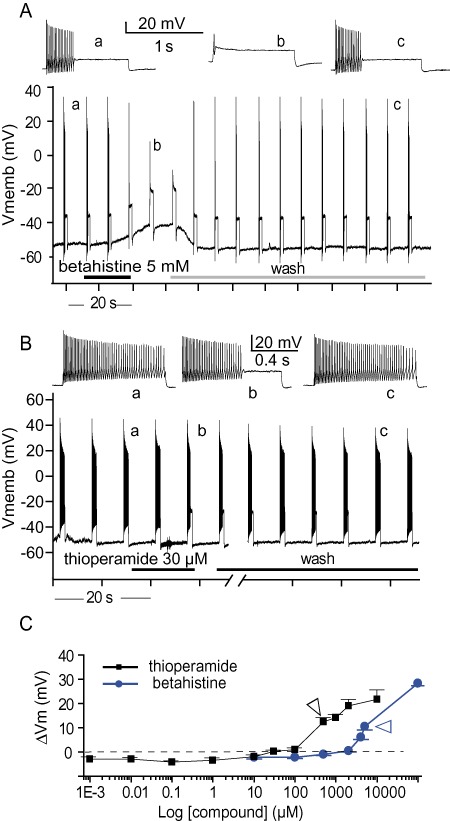Figure 1.

Effects of H3 and H3/H4 receptor antagonists on the firing properties of vestibular neurons. (A,B) Representative traces of current-clamp recordings. Trains of action potentials were elicited by 1 s, 200 pA depolarizing pulses applied every 6.5 s. (A) Sustained evoked discharges blocked by 5 mM betahistine. Betahistine induced a large reversible depolarization of 11.3 mV. Inserts present enlarged trains before betahistine application (a), during (b) and after wash (c). (B) Sustained evoked discharges inhibited by 30 µM thioperamide. Inserts present enlarged trains before (a) and during (b) thioperamide application. (C) Absolute variations of membrane potential elicited by betahistine and thioperamide. The two compounds induced a strong depolarization of the neurons at concentrations above 2 mM and 30 µM, respectively. Data represent means ± SEM from 3 to 21 separate experiments. Arrowhead indicates the concentration inducing 90% firing inhibition.
